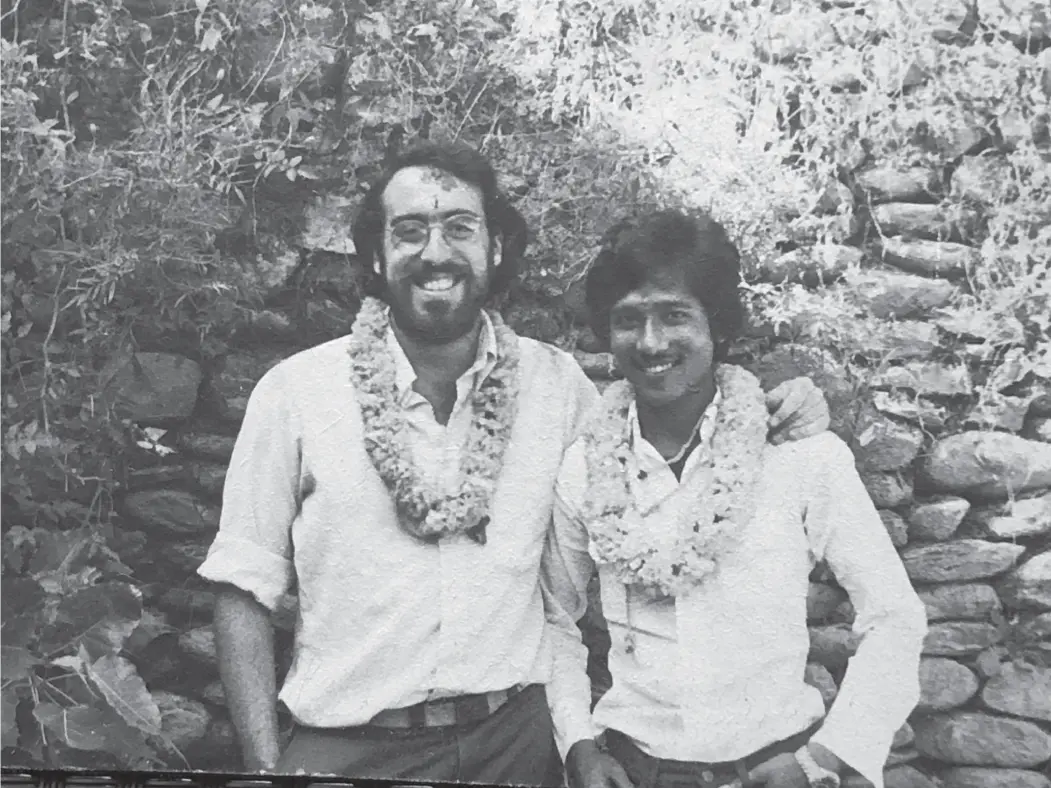Much as Sherpas did for me in traversing mountain paths and basecamps in the Himalayas, I hope to help you make your way through the noise and confusion surrounding the twenty‐firstcentury landscape of the future of work, jobs, and careers in a way that clarifies your options.
Lives were lost due to the sudden onset of a severe storm that caught the mountaineers by surprise and, perhaps most importantly, the decision to exceed the normal turnaround time back down the mountain. The climbers failed to realistically view the environment and their ability to change the forces of nature. My goal is to help travelers in the new world of work understand new routes and the changing conditions they are likely to encounter along the way. Your understanding of what's ahead and your choice of partners on your travels are critically important to your future success.
A Twenty-first-century Sherpa
At this critical juncture in our work history and our economy, I am eager to share what I have learned, set realistic expectations, and guide readers so they can craft action plans for themselves. Much like a Sherpa or travel guide, I hope to help others navigate a landscape that can feel intimidating.
I met many highly skilled Sherpas after college when I lived in Nepal for two years as a U.S. Peace Corps volunteer, teaching math and science in a rural village. When I decided to hike part of the challenging Annapurna Circuit, a 128-mile trek winding through some of the world's tallest mountains and most extreme climatic zones, I knew I needed an experienced guide. That's when I learned the difference between a mountain climber (me), a porter, and a Sherpa. A mountain climber generally scales a particular mountain once. A porter carries your belongings and gear in a basket up the mountain (for which we are all very grateful). Sherpas, from an ethnic group in Nepal who live in the Himalaya Mountains, are known for their superior strength and endurance, and for knowing the terrain and environment better than anyone else.
Among the most famous Sherpas was Tenzing Norgay, who in 1953, along with Sir Edmund Hillary, were the first two men to reach the peak of Mount Everest, the world's tallest mountain. 36 The Sherpa on my trip to Annapurna base camp told me what to bring, what to expect, and the best routes to take. He was calm in the face of challenges, including predators, or finding the usual paths obscured. He was able to adapt and make adjustments. He knew when the clouds swirled in a particular way that a storm was approaching and the best places to seek shelter. He also helped me feel confident and encouraged about the journey ahead.
Much as Sherpas did for me in traversing mountain paths and basecamps in the Himalayas, I hope to help you make your way through the noise and confusion surrounding the twenty-first-century landscape of the future of work, jobs, and careers in a way that clarifies your options rather than promotes a sense of anxiety about what's to come. The future of work calls for intentionality. This is not the time to leave matters to chance but to take deliberate action. The questions before us are too consequential; they cannot be relegated to technologists alone or financial pundits with a short-term focus on substitution and cost cutting. Indeed, organizations and business leaders are poised to shape what ultimately becomes the future of work. They have the chance to be thoughtful about how they redesign jobs and teams, redefine work itself, and find new ways to facilitate learning and development. Individuals will face decisions about how to gain new skills and capabilities as their jobs change or are phased out. As a society, we need better ways to help people gain new work skills and transition through multiple careers. We also need new laws to protect workers, especially those in the growing gig economy, who often lack minimum wage protection or health and social benefits.
 Jeff, on left, in Nepal, with US Peace Corps 1982
Jeff, on left, in Nepal, with US Peace Corps 1982
New Technology Has Always Created More Jobs
Whether it's a client at a business meeting or an acquaintance at a cocktail party, the first question I am always asked when the topic of automation comes up is, “ how many jobs will the robots take away from us?” Understandably, the persistence of this question stems from the accelerating pace of technological change and the specter of a future without work. Such fears are widespread: 82 percent of the United States thinks robots will take over much of the work currently done by humans, according to a recent Pew Research Center survey. 37 Relatively few adults surveyed saw an upside for workers as a result of automation and new workplace technologies.
One of the aims of this book is to persuade you that this is not the most important question or where we should direct our energy and focus. First, no one knows just how many jobs will be threatened by robots and other forms of automation. Second, it is not how many that matters. What matters is how we will navigate the new job and business opportunities created by technology and new ways of working.
“Clearly, a world in which five percent of jobs are eliminated by automation is very different from a world in which 50 percent of jobs are eliminated,” noted Gideon Lichfield, the editor-in-chief of MIT Technology Review . “But regardless of the numbers, we're going to face a lot of the same kinds of issues, just in differing degrees.” 38 Of greater interest than any number or percent is how automation, and not only robotics but also cognitive technology and AI, natural language processing, and machine learning will change our jobs and how we work.
Though we have been creating machines to do our work for us for centuries—including tractors, assembly lines, and computers—the proportion of adults in the United States with a formal full-time job has consistently risen during this time. Technology has not made human labor redundant and our skills obsolete. A 2018 report by the World Economic Forum projected that although nearly 1 million jobs may be lost to automation, another 1.75 million will be gained. 39
Economists are quick to point out that although new technology may displace certain types of work, history has shown us that technology has created more jobs than it has taken. 40 The challenge has often been the transition paths for workers to have access to the skills required for new jobs. Over the past 200 years, technology has changed human work but has not eliminated it. Department of Labor data shows that over the past two decades, many of the tasks that make up a job have changed. Though some tasks have disappeared, job growth has continued. This scenario includes groups of remote and diverse teams working together, productive collaboration between people and machines, and workers continuing to be employed by learning new capabilities throughout their lives.
Economists are quick to point out that while new technology may displace certain types of work, history has shown us that technology has created more jobs than it has taken.
What is new is the accelerated rate of the changes, which makes thinking about the future more important than it has ever been. The transformation from an agricultural economy to an industrial economy was linear, happening at a steady rate, where you add the same amount again and again over time. The current acceleration is exponential, which means you multiply the same amount again and again. 41 Though technological advances are moving quickly, they can be more complicated to implement than we realize. Take autonomous cars. Who can forget the relentless hype around self-driving cars? Predicted to be the greatest disruptors to transportation since Henry Ford's Model T, autonomous-driving cars were said to be only months away from being tried out by the general public. 42 It turns out that few understood what was required to complete one of these cars. Navigating unpredictable traffic and weather patterns, as well as knowing how to react to distracted pedestrians in danger of being hit, added to the complexity of bringing self-driving cars to a street near you. When a few test vehicles crashed, it became clear that deploying robot cars was far more complex than many envisioned just a few years earlier. In addition to technology challenges, liability issues had to be addressed. Some now say it may be many years before self-driving cars replace human drivers on our highways. But they are coming.
Читать дальше

 Jeff, on left, in Nepal, with US Peace Corps 1982
Jeff, on left, in Nepal, with US Peace Corps 1982










